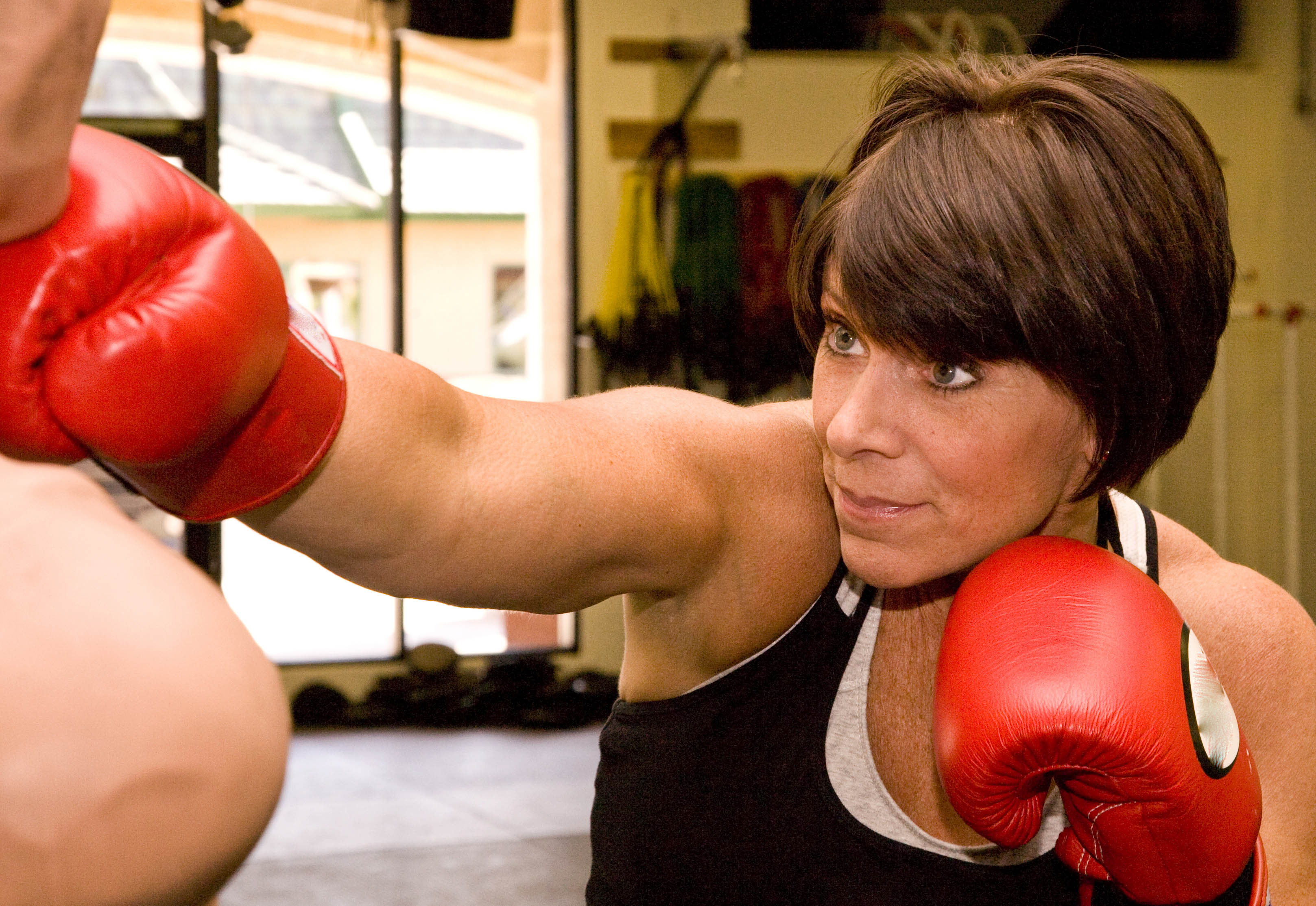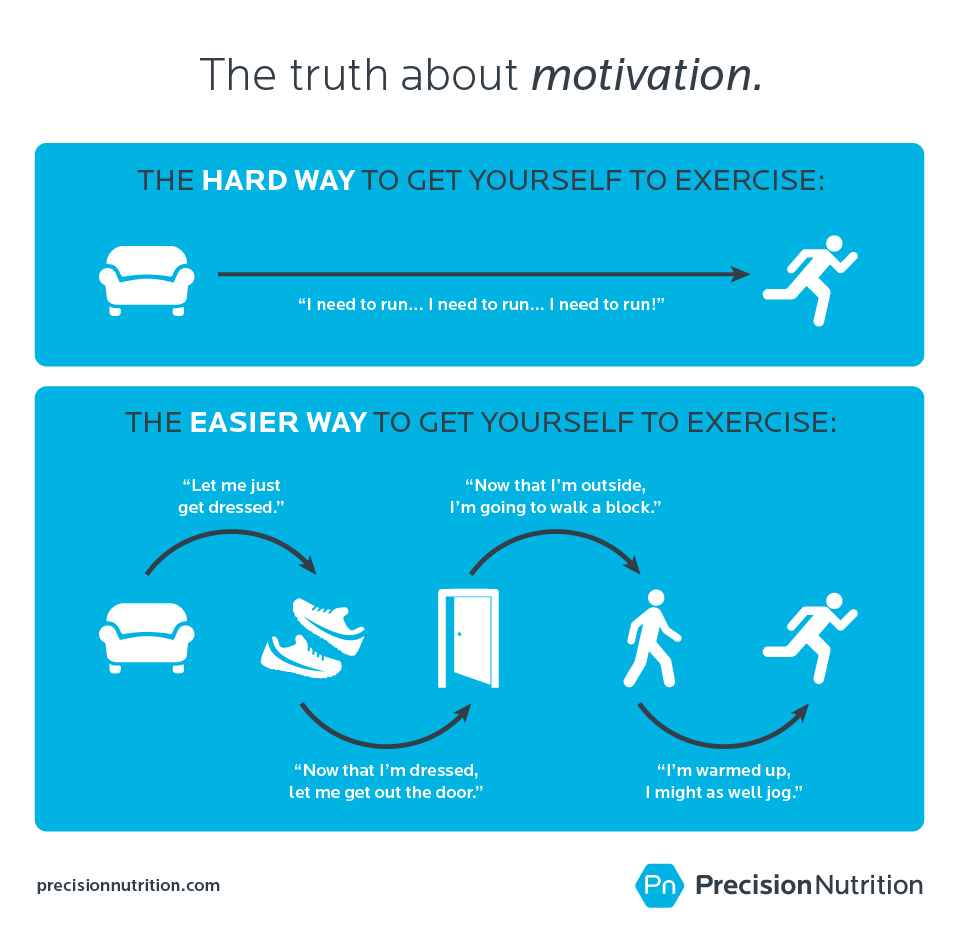Some say exercise can defeat depression. Sure, it’s worth a try — in theory. But when you’re depressed, it can be hard to muster the motivation. Here are some gentle incentives and strategies for giving it a go.
Ever dealt with depression? Then you’ve probably been told to find a physical outlet for your feelings.
Maybe a well-meaning friend told you to “just get outside and go for a jog.”
Or a doctor “prescribed” fitness to counter your symptoms.
Perhaps you read the book about dancing as a depression cure, or well-trafficked Reddit threads about the mental benefits of everything from gentle gardening to brutal obstacle courses.
Just get out there, folks say. It’ll take your mind off your problems.
But if you’ve ever lived under the scratchy, smothering gray blanket of this illness, you know:
It’s not that easy.
Depression can make your body feel dull. Heavy. Wooden. Listless.
When you’re depressed, the mere idea of picking up one foot and dragging it in front of the other can seem laughable. (If you can dig up a chuckle, that is.)
I know, because I’ve been there.
One day, while in the throes of a good old-fashioned dark-rain-cloud depression, I woke up and felt stuck. I’d been glued to my flat emotional landscape like a little moth on flypaper.
I knew I needed to do something different.
Without thinking, I got down on the floor. Started doing push-ups. Grabbed a couple of dusty old dumbbells. Did a few lifts. A few rows. A few squats.
At first, it was just a gaspy, desperate rush to experience something — anything— other than what I’d been feeling.
But once I was done, I wanted more.
I needed an emotional outlet. Moving my body felt good. (And to be honest, I wanted to hit things.) So I decided to take a boxing class. Ordinarily I might have talked myself out of it. But at that point, I felt I had nothing to lose.
Lucky for me, it was love at first punch.
Looking back, I wonder about the role exercise played in healing my depression.
Was it powerful medicine? Or just a placebo? Could movement have kept my depression away in the first place?
And if exercise does help with depression… how the heck do you find the energy for it when, you know, you’re depressed.

Lifestyle and mental health go hand-in-hand
Much like nutrition’s role in mental health, decades of research show a link between exercise — resistance training, aerobics, yoga… everything — and better mood.
And the relationship is solid: A 2014 meta-analysis of 24 studies, including hundreds of thousands of patients, confirmed: The more we sit, the sadder we are.
For example, one classic study from Columbia University found that sedentary people are depressed twice as often as active people.
But does an inactive lifestyle cause depression, or vice versa?
A recent study looking at adults over the course of three decades concluded that the relationship is bidirectional. In other words, maybe sitting around makes you depressed, and maybe that reduces your urge to move. And round and round we go.
OK, so moving your body might help you avoid becoming depressed in the first place. But could it also stop depression in its tracks?
Maybe.
For some people, exercise is as good as antidepressant medications. Or even better. And it seems that in general, the more people exercise, the better they feel.
How exercise makes us happier
Physical activity could improve your state of mind by:
- curbing stress chemicals: A 2014 study demonstrated that PGC-1alpha — an enzyme produced in muscles during exercise — has the ability to break down kynurenine, a substance that accumulates in the bloodstream after stress and has been linked to depression.
- supporting neurotransmitters: Exercise may boost the production of serotonin — a neurotransmitter that helps regulate mood and some cognitive function, and that may be low in depressed people. Physical activity may also stimulate neurogenesis, the growth of new neurons. That could improve cognition, and, in turn, your mental health.
- boosting endorphins: Exercise can give you a short-term burst of endorphins, chemicals in the brain that block pain and produce a natural “high.”
- reducing inflammation: Many types of exercise can lower inflammation, a potential cause of depression.
- decreasing stress: There’s a reason that some athletes refer to their time at the gym as “therapy.” Exercise can be a great antidote to stress, which research has linked to depression, perhaps owing to the body’s inflammatory stress response.
- encouraging happier thoughts and feelings: In 2009, one study explored depressed women’s use of long-distance running as a coping mechanism. Exercise can distract us from negative thoughts and feelings, while making us feel joyful and purposeful. It can also provide a sense of identity, which depression often steals from us.
I can imagine a lot of reasons why boxing helped me feel better
Boxing gave me an outlet — a way to express pent-up emotions, and a break from being “in my head.”
When I felt helpless, boxing empowered me. When I felt alone, boxing gave me a coach and a community.
When I felt frustrated, angry, or simply like beating the crap out of a heavy bag, well… boxing is just what the depression doctor ordered.
I left each class high on endorphins and a sense of satisfied accomplishment.
What to do next
I know it’s not easy to do stuff when you’re depressed. Just getting out of bed is a victory some days.
But here are some things you can try, if you’re ready.
If you can do any of these, even just a little bit, congratulate yourself. Each one is an accomplishment.
#1: Take it step by step
You almost can’t start too small. If a 30 minute jog feels impossible, try a walk around the block. If that feels too far, shrink the distance even further to whatever feels manageable. Walk from the couch to the bathroom a few times.
I got a lot out of an illustration called “The Truth About Motivation” from the workbook Exercise for Mood and Anxiety Disorders.

#2: Try something that used to bring you joy
Depression can bleach the colors out of your rainbow and strip the fun from things you used to love.
Give it a go anyway. Do whatever you love (or used to love), whether it’s taking the dog for a walk or playing touch football with friends.
You might not feel the magic. That’s OK. Just try whatever you can manage.
Because the opposite — living completely without your favorite activities — sucks worse.
#3: Try something new
As Janis Joplin famously sang, “Freedom’s just another word for nothin’ left to lose.”
Depression can disintegrate you. But then, you don’t have any more rules to play by.
Sometimes, the benefit of feeling lost is that you can wander into new territory. I walked into a boxing gym when I felt so low I was willing to try anything.
If you can open yourself up to new experiences, you may find pleasure in things you never even considered before.
#4: Get support
Whether it’s therapists, doctors, family or friends, ask for help from the people around you. Tell them you want to try exercise.
They may be able to help you, inspire you, or even join you. If you can, seek out a community-focused gym or athletic group, an online support system, and/or a personal trainer. Assemble the “team” that works best for you.
#5: Get outside
Nature is powerful. Sunshine, fresh air, green space… even the friendly bacteria in soil may make you feel better.
Soak up as much nature as you can. If you live in the city, go to a park or spend time in a local garden. If leaving the house feels too daunting, start by opening a window and bringing some plants into your home. Try to work your way up to spending time outside.
#6: Mix it up
One you’re on a bit of a roll, consider mixing aerobic exercise (such as walking, cycling, running, or swimming), with anaerobic sets. While most studies on depression focus on aerobic activity, there’s a place for strength-based work, too — such as high intensity interval training (HIIT) — which can get those endorphins kicking.
#7: Be consistent
Whatever you can move, move it. The more you move, the better it works.
You might feel better right away after a single exercise session. Or it might take a little while. Either way, keep moving as often as you can, in any way you can.
Meanwhile, observe your symptoms. Consider logging your feelings in a journal, so you can look for benefits. If you’re not getting any better after a test period, consult your doctor.
#8: Be gentle and patient
Don’t beat yourself up if you skip a workout. This isn’t about achieving perfection or becoming a superstar athlete. It’s about doing something good for yourself.
On the flip side, don’t overdo it. Intense training can boost your endorphins, but it can also raise your cortisol, a stress hormone, tax the central nervous system, and cause inflammation — none of which will help depression.
++++
How do you put this all together? Think about designing your own personal prescription.
Therapy, medication, nutrition, social support, and any other creative methods of your choosing may all work together to help you get better, over time. Pick what works best for you.
Everyone experiences depression differently. You might find that exercise doesn’t do much.
But it might just become the best depression-fighter you’ll ever find.
Eat, move, and live… better.
The health and fitness world can sometimes be a confusing place. But it doesn’t have to be.
Let us help you make sense of it all with this free special report.
In it you’ll learn the best eating, exercise, and lifestyle strategies — unique and personal — for you.





